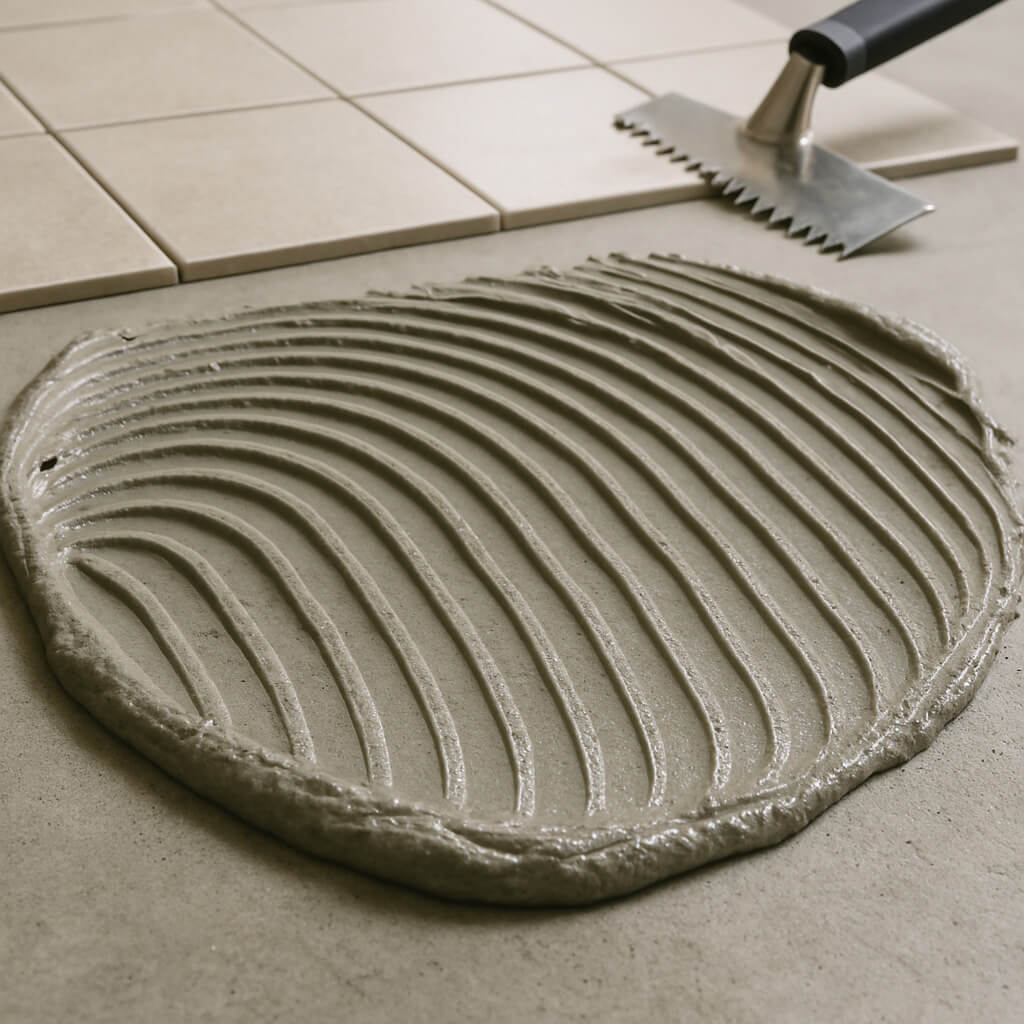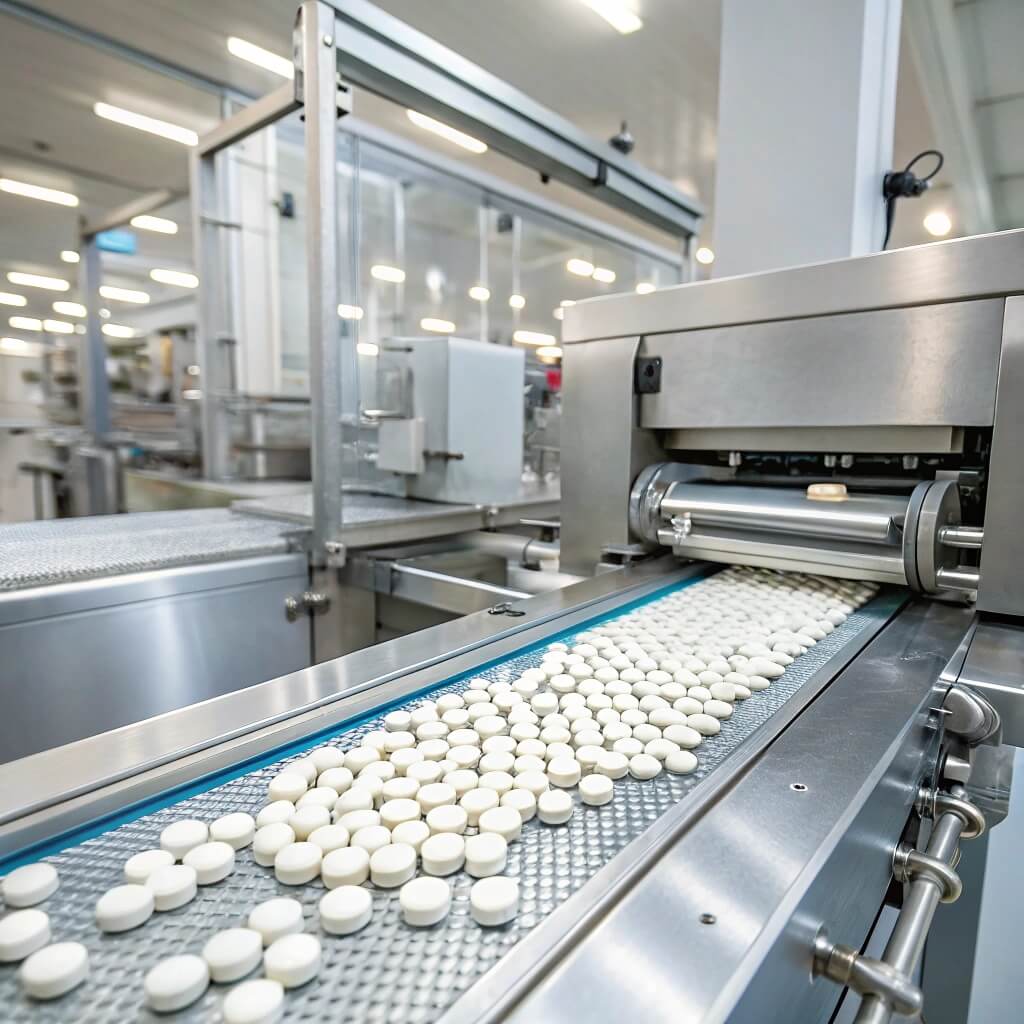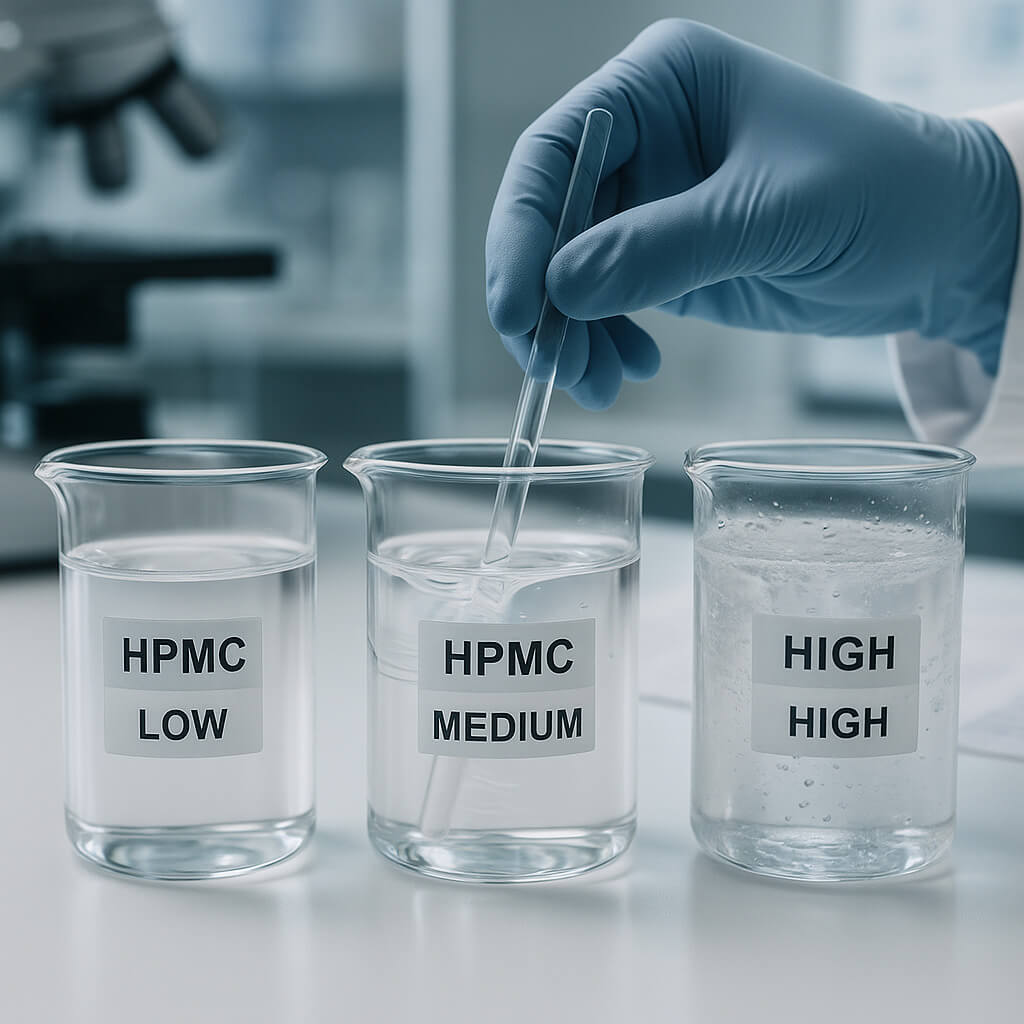Hydroxypropyl methylcellulose (HPMC) stands as a critical component in numerous manufacturing processes across industries. For purchasing managers and technical decision-makers, understanding the production technologies behind this versatile material directly impacts product quality, cost efficiency, and supply chain reliability. This article examines the four fundamental production technologies for HPMC, comparing their formulas, processes, and applications to help you make informed procurement decisions.

1. What Is HPMC And Why Is It Important In Manufacturing?
Hydroxypropyl methylcellulose (HPMC) is a semi-synthetic, inert polymer derived from cellulose. Its chemical structure features a cellulose backbone modified with hydroxypropyl and methyl substituent groups, creating a compound with unique physical and chemical properties.
But here’s what makes it truly valuable: HPMC possesses exceptional film-forming capabilities, binding properties, and thickening abilities that few other materials can match. Its water solubility combined with thermal gelation properties creates a versatile material that performs consistently across multiple applications.
The industrial significance of HPMC spans numerous sectors. In construction, it serves as a critical additive in cement-based products, improving water retention and workability. Pharmaceutical manufacturers rely on HPMC for controlled-release drug formulations and tablet coatings. The food industry utilizes it as a thickener and stabilizer, while personal care products incorporate it for its film-forming properties.
| Промышленность | Основные приложения HPMC | Key Properties Utilized |
|---|---|---|
| Строительство | Mortars, renders, tile adhesives | Удержание воды, обрабатываемость |
| Фармацевтическая | Tablet coatings, matrix systems | Film formation, controlled release |
| Еда | Sauces, dressings, baked goods | Thickening, stabilization |
| Личная гигиена | Creams, gels, shampoos | Viscosity control, film formation |
The production technology selected for HPMC manufacturing significantly influences its performance characteristics. Understanding these technologies helps procurement professionals make informed decisions about supplier capabilities and product specifications.
2. How Does The Etherification Production Method Work For HPMC?
The etherification method represents one of the most established approaches to HPMC production. This chemical process transforms natural cellulose into hydroxypropyl methylcellulose through a series of controlled reactions with methyl chloride and propylene oxide under alkaline conditions.
Вы можете быть удивлены, узнав, that the etherification process begins with highly purified cellulose, typically derived from cotton linters or wood pulp. This raw material undergoes alkaline treatment with sodium hydroxide (caustic soda) to form alkali cellulose, which activates the cellulose hydroxyl groups for subsequent reactions.
The production process follows these key steps:
- Alkalization: Cellulose fibers react with sodium hydroxide to form alkali cellulose
- Pressing: Excess alkali is removed to achieve optimal alkalinity
- Etherification: Reaction with methyl chloride and propylene oxide to introduce methyl and hydroxypropyl groups
- Neutralization: Acid treatment to neutralize remaining alkali
- Purification: Washing and filtration to remove by-products and impurities
- Drying: Controlled drying to achieve desired moisture content
| Process Parameter | Типичный диапазон | Влияние на конечный продукт |
|---|---|---|
| Температура реакции | 50-80°C | Affects degree of substitution |
| Alkali Concentration | 30-50% | Influences reaction efficiency |
| Methyl Chloride Ratio | 0.5-2.0 mol/AGU | Determines methoxyl content |
| Propylene Oxide Ratio | 0.1-1.0 mol/AGU | Controls hydroxypropyl content |
The etherification method offers precise control over substitution patterns and the ability to produce high-purity grades suitable for pharmaceutical applications. However, it requires significant capital investment, stringent safety protocols, and generates chemical waste that must be properly managed.
3. What Makes The Slurry Process Effective For HPMC Production?
The slurry process has emerged as a preferred method for large-scale HPMC production due to its operational efficiency and product consistency. This heterogeneous reaction system suspends cellulose in an inert organic medium during the etherification reactions, offering unique advantages over other methods.
А вот и самая захватывающая часть: The slurry process creates a non-aqueous reaction environment that prevents cellulose dissolution while allowing efficient reagent access to reaction sites. This approach maintains the fibrous structure of cellulose throughout the process, resulting in more uniform substitution patterns.
The technical implementation of the slurry process requires specific raw materials and reagents:
- Refined cellulose pulp (typically 90-98% alpha-cellulose content)
- Organic solvent (commonly isopropanol or tert-butanol)
- Sodium hydroxide (30-50% aqueous solution)
- Methyl chloride (gaseous reagent)
- Propylene oxide (liquid reagent)
| Control Parameter | Приемлемый диапазон | Monitoring Method |
|---|---|---|
| Slurry Density | 10-20% solids | Density measurement |
| Alkali Ratio | 0.8-1.5 mol/AGU | Titration analysis |
| Reaction Pressure | 2-5 bar | Pressure transducers |
| Residual Reagents | <100 ppm | Газовая хроматография |
HPMC produced via the slurry process typically exhibits excellent batch-to-batch consistency with uniform particle morphology. The method allows for efficient heat transfer during exothermic reactions, reducing hot spots and minimizing side reactions that could affect product quality.
For purchasing managers, the slurry process offers compelling cost advantages. The method achieves higher yields (typically 95-98%) compared to other processes, utilizes reagents more efficiently, and requires less energy for purification steps. Additionally, the organic solvent can be recovered and recycled, reducing raw material costs and environmental impact.
4. How Is HPMC Manufactured Using The Dry Process Technology?
The dry process technology represents a significant innovation in HPMC manufacturing, eliminating the need for organic solvents while maintaining product quality. This solvent-free approach has gained traction for its environmental benefits and operational simplicity.
What you need to know is that the dry process fundamentally differs from wet methods by conducting the etherification reaction in a solid-state environment rather than a liquid medium. This approach requires specialized equipment and precise process control to achieve uniform substitution across the cellulose material.
The production workflow follows these essential steps:
- Cellulose preparation: Mechanical processing to achieve optimal particle size and surface area
- Dry alkalization: Mixing cellulose with powdered or sprayed sodium hydroxide
- Dry etherification: Reaction with gaseous methyl chloride and propylene oxide in sealed reactors
- Neutralization: Addition of acidic compounds to neutralize residual alkali
- Washing: Water extraction to remove by-products and impurities
- Drying: Controlled dehydration to specified moisture content
| Comparison Factor | Dry Process | Wet Process |
|---|---|---|
| Solvent Requirement | Никто | 5-10 kg/kg product |
| Reagent Efficiency | 85-95% | 70-85% |
| Energy Consumption | Умеренный | Высокий |
| Wastewater Generation | Низкий | Высокий |
Equipment requirements for the dry process include specialized mixers for dry alkalization, sealed reactors capable of handling gaseous reagents, and sophisticated control systems to monitor reaction parameters. The process demands precise temperature control, typically maintained between 30-60°C, with reaction times ranging from 1-4 hours.
Formula optimization for different HPMC grades focuses primarily on adjusting the ratio of methyl chloride to propylene oxide. For high-viscosity grades, the process parameters favor higher molecular weight retention, while low-viscosity grades undergo more intensive degradation during processing.
5. What Are The Benefits Of The Solution Process For HPMC Production?
The solution process represents a specialized approach to HPMC production that offers unique advantages for certain applications. Unlike other methods, this technology involves dissolving cellulose completely before etherification, resulting in distinctive product characteristics.
Правда в том, that the solution process creates HPMC with exceptionally uniform substitution patterns and controlled molecular weight distributions. This translates to superior performance in applications requiring precise rheological properties and consistent dissolution behavior.
The technical specifications of the solution process center around the complete dissolution of cellulose in a suitable solvent system prior to etherification. Common solvent systems include:
- Dimethylacetamide/lithium chloride (DMAc/LiCl)
- N-methylmorpholine-N-oxide (NMMO)
- Ionic liquids such as 1-butyl-3-methylimidazolium chloride
| Система растворителей | Working Temperature | Cellulose Solubility | Recovery Efficiency |
|---|---|---|---|
| DMAc/LiCl | 70-90°C | Up to 15% | 85-95% |
| NMMO | 80-100°C | Up to 20% | 90-98% |
| Ionic Liquids | 60-80°C | Up to 25% | 80-90% |
The end-product characteristics of solution-processed HPMC include:
- Narrow molecular weight distribution
- Highly uniform substitution pattern
- Superior solution clarity
- Enhanced thermal gelation properties
- Improved film-forming capabilities
These properties make solution-processed HPMC particularly valuable for pharmaceutical applications, high-performance coatings, and specialized food ingredients where performance consistency justifies the premium price.
For B2B decision-makers, the cost-benefit analysis must consider both the higher production costs and the enhanced performance characteristics. The solution process typically increases production costs by 20-40% compared to conventional methods, but delivers HPMC with performance advantages that may reduce usage rates or improve end-product quality.
6. How Do These HPMC Production Technologies Compare In Performance?
When evaluating HPMC production technologies, decision-makers must consider multiple performance factors that directly impact business outcomes. Each method presents distinct advantages and limitations that influence product quality, operational efficiency, and economic viability.
You’ll be amazed to discover that the choice of production technology can affect not only the chemical properties of HPMC but also its physical characteristics, processing behavior, and application performance. These differences become critical when selecting suppliers for specific end-use applications.
The following table provides a comprehensive comparison of all four production technologies across key performance metrics:
| Метрика производительности | Этерификация | Slurry Process | Dry Process | Solution Process |
|---|---|---|---|---|
| Производственная мощность | Середина | Высокий | Высокий | Низкий |
| Energy Consumption | Высокий | Середина | Низкий | Очень высокий |
| Product Uniformity | Середина | Высокий | Середина | Очень высокий |
| Воздействие на окружающую среду | Высокий | Середина | Низкий | Высокий |
Production capacity and efficiency metrics reveal significant differences between technologies. The slurry and dry processes excel in high-volume production scenarios, with typical outputs of 5-15 tons per day. The solution process, while limited to 1-3 tons per day, offers unmatched flexibility for specialty grades.
Quality and consistency factors also vary considerably. The solution process achieves the highest substitution uniformity (coefficient of variation <5%) but at significantly higher cost. The slurry process delivers excellent consistency (coefficient of variation 5-10%) at moderate cost, making it the preferred choice for many commercial applications.
For technology selection, purchasing managers should consider their specific requirements for product performance, volume needs, and budget constraints. High-volume applications with standard performance requirements typically favor the dry or slurry processes. Specialized applications demanding exceptional consistency and performance may justify the premium cost of solution-processed HPMC.
7. What Quality Standards Must HPMC Production Meet For Different Industries?
HPMC quality standards vary significantly across industries, with each sector imposing specific requirements based on application needs and regulatory frameworks. Understanding these standards is essential for purchasing managers to ensure supplier compliance and product suitability.
The critical factor to consider is that quality standards for HPMC encompass not only chemical specifications but also physical properties, impurity profiles, and performance characteristics. These comprehensive requirements ensure consistent performance in end-use applications.
For pharmaceutical applications, HPMC must comply with pharmacopeia standards such as USP, EP, or JP, which specify strict limits on heavy metals (<10 ppm), residual solvents (<0.1%), and microbial contamination (<100 CFU/g). Additionally, pharmaceutical-grade HPMC requires Drug Master File (DMF) documentation and often GMP certification for manufacturing facilities.
The food industry requires HPMC to meet food additive regulations such as FDA 21 CFR 172.874, EU E464, or equivalent standards. These specify purity criteria including arsenic (<3 ppm), lead (<2 ppm), and total heavy metals (<20 ppm).
| Промышленность | Первичные стандарты | Ключевые параметры | Typical Certifications |
|---|---|---|---|
| Фармацевтическая | USP/NF, EP, JP | Substitution degree, viscosity, heavy metals | GMP, DMF, CEP |
| Еда | FDA, EU, JECFA | Purity, heavy metals, loss on drying | GRAS, E464, Kosher, Halal |
| Строительство | ASTM, EN, ISO | Water retention, workability, sag resistance | CE, ISO 9001 |
| Личная гигиена | INCI, ISO | Viscosity, clarity, microbial limits | ISO 22716, EFfCI GMP |
Testing methods and quality assurance protocols vary by parameter. Substitution degree is typically determined by gas chromatography after hydrolysis. Viscosity measurement follows standardized methods such as USP <911> or ASTM D2363. Impurity profiles require sophisticated analytical techniques including ICP-MS for heavy metals and GC-MS for residual solvents.
Supplier qualification considerations should include:
- Quality management system certification (ISO 9001)
- Industry-specific certifications (GMP, FSSC 22000)
- Analytical capabilities and testing protocols
- Batch-to-batch consistency data
- Change control and notification procedures
Future trends in quality standards point toward increased scrutiny of environmental impact, with emerging requirements for carbon footprint documentation, sustainable sourcing certification, and reduced environmental contaminants.
Заключение
The four key HPMC production technologies—etherification, slurry process, dry process, and solution process—each offer distinct advantages for specific applications and production scenarios. Understanding these differences empowers purchasing managers to make informed decisions that align with their technical requirements and business objectives. The choice between these technologies directly impacts product performance, cost structure, and supply chain reliability.
For B2B buyers, particularly in industries with stringent quality requirements, evaluating suppliers based on their production technology capabilities provides a competitive advantage. By matching the right HPMC production method to your specific application needs, you can optimize both performance and cost-efficiency. As market demands and regulatory requirements continue to evolve, staying informed about HPMC production technologies will remain essential for procurement professionals seeking to deliver value to their organizations.
Часто задаваемые вопросы
Q1: Which HPMC production technology offers the best cost-efficiency ratio?
The dry process typically offers the best cost-efficiency ratio for standard HPMC grades due to its lower energy consumption, reduced waste generation, and elimination of organic solvents. For high-volume applications with moderate performance requirements, this technology provides an optimal balance of quality and cost. However, for specialized applications requiring exceptional consistency, the higher cost of slurry or solution processes may be justified by improved performance.
Q2: How do different HPMC grades vary in their manufacturing requirements?
HPMC grades vary primarily in molecular weight (affecting viscosity) and substitution pattern (affecting solubility and thermal gelation). High-viscosity grades require careful control of degradation during processing, often necessitating milder reaction conditions. Grades with specific substitution patterns, such as those with high hydroxypropyl content, require precise reagent ratios and reaction monitoring. Pharmaceutical and food grades demand higher purity standards, requiring additional purification steps.
Q3: What are the key raw materials needed for HPMC production?
The essential raw materials for HPMC production include high-purity cellulose (typically from cotton linters or wood pulp with >90% alpha-cellulose content), sodium hydroxide (caustic soda), methyl chloride, and propylene oxide. Depending on the production technology, additional materials may include organic solvents (for slurry or solution processes), neutralizing acids (acetic or hydrochloric acid), and purified water.
Q4: Can HPMC production technologies be combined for better results?
Yes, hybrid approaches combining elements of different HPMC production technologies can offer advantages in specific scenarios. For example, modified dry processes may incorporate limited solvent use to improve substitution uniformity while maintaining operational simplicity. Some manufacturers employ sequential processing, using one technology for initial etherification followed by another for finishing or modification. These hybrid approaches can optimize both product performance and production efficiency.
Q5: What environmental considerations impact HPMC manufacturing choices?
Environmental factors increasingly influence HPMC manufacturing decisions. The dry process offers significant environmental advantages by eliminating organic solvents and reducing wastewater generation. The slurry process, while using solvents, typically incorporates efficient recovery systems with >95% recycling rates. The solution process presents the highest environmental challenges due to specialized solvent systems. Regulatory pressures regarding VOC emissions, wastewater discharge, and carbon footprint are driving manufacturers toward greener technologies.




